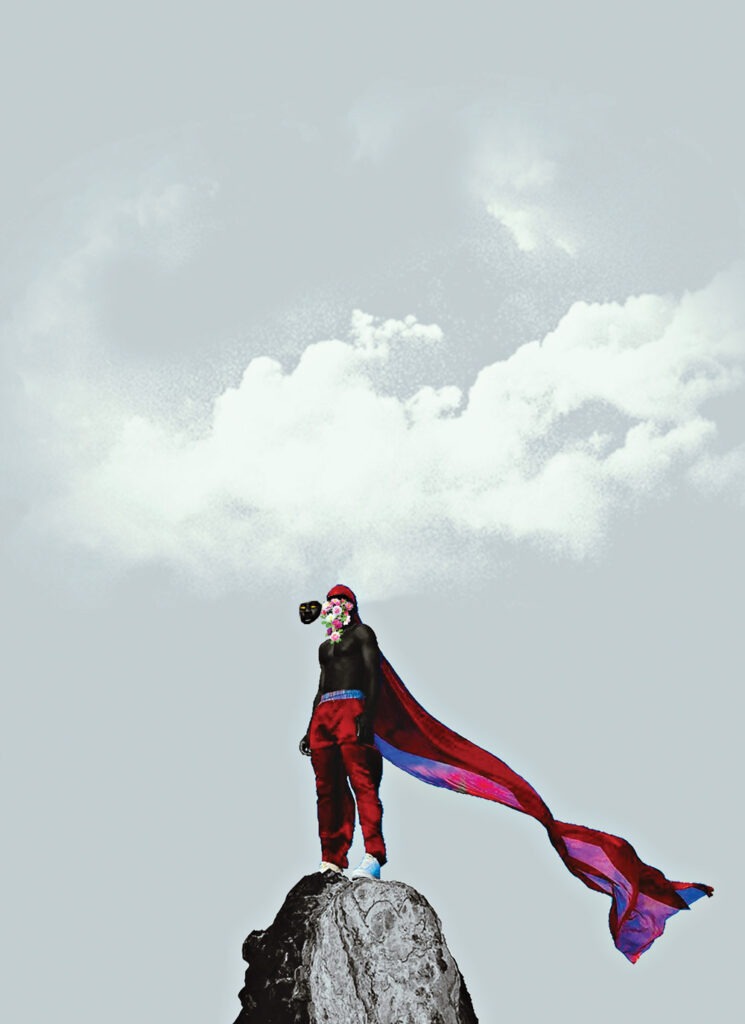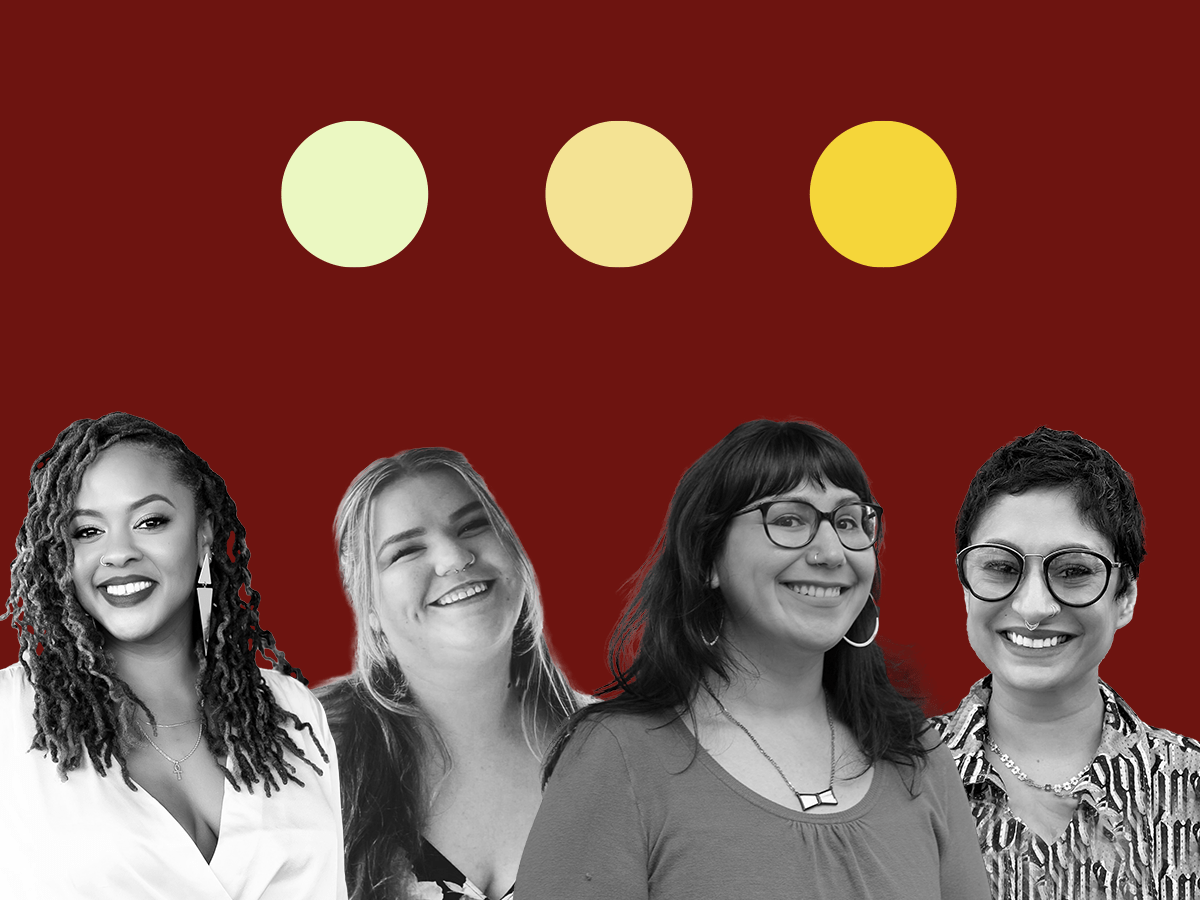
Editors’ note: This article is from NPQ’s winter 2022 issue, “New Narratives for Health.”
Disability justice emerged as a framework in the early 2000s, as disabled queer folks and BIPOC activists reflected on and critiqued the Disability Rights Movement of the 1960s and ’70s—which focused on advocacy for legislation and policy protecting the rights of disabled people.1 The passage of the Individuals with Disabilities Education Act in 1975 and the passage of the Americans with Disabilities Act in 1990 were pivotal successes for disabled Americans, cementing access to accommodations, equitable education, and physical spaces. Focused primarily on themes such as independent living and individual rights, however, this movement did not explicitly centralize the needs and experiences of those who experience intersectional oppression2—for example, people with disabilities who are people of color, immigrant, trans or gender-nonconforming, among many other identities.3
In 2005, a group of disabled activists—predominantly, queer women of color who came from movement spaces that did not systematically address ableism—came together to propose a disability justice framework focused on intersectional identity and collective liberation. One of those activists, Patty Berne, has observed that the disability rights movement is “single issue identity based; its leadership has historically centered white experiences; . . . it centers people with mobility impairments, marginalizing other forms of impairment; and centers people who can achieve rights and access through a legal or rights-based framework.”4 While the disability rights movement enabled an initial path toward justice, activists acknowledged that for many groups facing multiple forms of oppression, additional perspectives and approaches were crucial. Disability justice represents the second wave of the disability rights movement.
This second wave was the focus of a recent webinar hosted by NPQ on disability justice and its applicability in the workplace.5 The webinar—featuring Adela Ruiz, program and grants lead at the NBA Foundation, and Sandy Ho, Disability Inclusion Fund director at Borealis Philanthropy—lays out the principles of disability justice and its intersectionality with other movements, including LGBTQIA+ rights, BIPOC justice, feminism, and immigrant justice. The participants also discuss how workplaces, particularly at this point in the COVID-19 pandemic, should be ensuring equity for people with disabilities.
“Disability justice really comes about because traditional disability rights movements did not center or didn’t center as well the experiences and perspectives of queer, trans, Black, Indigenous, people of color, immigrants, and women. And that’s important, and the list is long for a reason, because it is a call-in to members of the community that had not been in the leadership roles and the decision making in the public leadership as much. It’s critical to have that leadership and opportunity component center folks that have been historically excluded,” explains Ruiz. “People with disabilities deserve respect, dignity, and genuine inclusion.”
Ho and Ruiz kicked off the panel by defining ableism as a “system of assigning values to people’s bodies and minds based on socially constructed ideas of normalcy, productivity, desirability, intelligence, excellence, and fitness.” These ideas are rooted in histories of oppression, from colonialism to eugenics, and have been integrated into our present-day systems and policies. As the panelists explain, one does not need to be disabled in order to experience ableism. A view of societal value that is based on an “ability to satisfactorily re/produce or ‘excel’ and ‘behave,’” Ruiz explains, is inherently harmful to marginalized groups who may already be deemed as “less than” by the systems with which they interact.
In response to the critical need for anchoring the movement in the needs and realities of intersectional identities, members of the disability rights movement with those multiple identities created a framework of disability justice that centers ten principles not historically centered within the movement:
- Intersectionality—applying the perspectives and analysis of multiple identities and groups to movement work
- Leadership of Those Most Impacted—centering democratic leadership by those with direct lived experience with disabilities
- Anti-Capitalistic Politic—applying a critique of the ways in which capitalism centers productivity and narrowly defines societal value
- Commitment to Cross-Movement Organizing—engaging with other social movements to ensure mutual reinforcement and strategic alignment
- Recognizing Wholeness—valuing all parts of an individual’s offerings to the community and to movement work
- Sustainability—building environments that are focused on long-term healing and change
- Commitment to Cross-Disability Solidarity—preventing siloing within the disability justice movement and identifying shared aims
- Interdependence—honoring communal exchange and relationships among individuals and movements
- Collective Access—prioritizing access for multiple identities, geographies, and contexts
- Collective Liberation—recognizing that struggles are interconnected and that working toward liberation for all is necessary6
“A Disability Justice framework understands that all bodies are unique and essential, that all bodies have strengths and needs that must be met. We know that we are powerful not despite the complexities of our bodies, but because of them.” —Patty Berne
These principles reflect an analysis of able-bodied supremacy as a form of oppression that is not unique to disability rights but rather is a root cause of other systems of exploitation, such as racism and capitalism. In centering white experiences, earlier phases of disability rights might have relied on corporate endorsements and strategies instead of grappling with the ways in which capitalism espouses a narrow definition of productivity. Similarly, a prior focus on self-advocacy for disabled people overlooks the ways in which interdependence and collective liberation are key to those with intersectional identities achieving shared visions for well-being.
As Berne observes, “A Disability Justice framework understands that all bodies are unique and essential, that all bodies have strengths and needs that must be met. We know that we are powerful not despite the complexities of our bodies, but because of them.”7
Adopting a Disability Justice Framework in the Workplace
Understanding the above ten principles that make up the disability justice framework is a crucial prerequisite to applying disability justice to the workplace (and beyond), particularly given a history in which these principles have not been centered. The panelists emphasize this need particularly in the context of the COVID-19 pandemic, which launched a major shift in national dialogue and practices surrounding ways of work. They share three major takeaways that have emerged out of the past two and a half years:
Sign up for our free newsletters
Subscribe to NPQ's newsletters to have our top stories delivered directly to your inbox.
By signing up, you agree to our privacy policy and terms of use, and to receive messages from NPQ and our partners.
- Our country’s public health policies, heightened in the context of a pandemic, manifest ableism by deeming some bodies as less deserving of equal access to health, well-being, and medical treatment than others. For example, Ho notes that “we have seen the ways that emergency rooms have done medical care rationing of ventilators when a person with a disability comes in and is deprioritized because of ableist beliefs that undergird our public health system and prioritize a nondisabled person’s ventilator access.”8
- Disabled folks, many of whom stand to be particularly negatively impacted during a pandemic, have had to advocate for services that enable them to experience ongoing quality of life, from home-based services9 to vaccination.10
- Workplaces across the country pivoted toward a more access-centered culture and workplace during the pandemic—from remote work to four-day workweeks and the opening up of positions that previously had criteria related to physical Such access, however, has been bittersweet for those with disabilities, as many of the accommodations they had requested previously from their workplaces were denied or seen as a hindrance, but when those without disabilities requested the same changes, there was rapid adaptation.11
“The COVID-19 pandemic has [been a lens into] the ways that our country and at least some pockets of our community continue to dig deeper into equity and disability justice values [and] then really challenge what this idea of ‘normalcy’ is that we’re all suddenly trying to return back to A return to normalcy is a return back to ableism [and] ableist practices that we knew did not facilitate equity and equality [even] in some of our organizations that are more justice-aligned,” Ho reflects.
The panelists share several areas for workplace assessment within a disability justice approach:
First is education, particularly around the concepts of intersectionality, cross-movement solidarity, collective access, and more—ensuring that employees across a workplace are grounded in the history of disability and understand its intersectionality with other identities within the workplace. “It’s an addition, versus something that should be extractive,” Ruiz explains. “If you are working with young people, with Black and Brown people, with queer/trans people, chances are that a critical mass of your constituents manage disabilities in some way or another—so it’s important to understand what the historical connection is and how ableism shows up in their lives and in their experiences.”
The second area named is hiring. Reflecting on their roles in philanthropy, Ho and Ruiz share that funders are often unclear about how to build relationships with the disability community in order to broaden their hiring pool and inform their work. “Here’s the thing: you’re likely already doing disability justice work, even if you’re not calling it that. People with disabilities and ableism are present in every community, every issue area.” Engaging in equitable hiring practices requires breaking the myth that lowering barriers to access for employee candidates with disabilities is a compromise of quality, when in fact hiring people with disabilities into various levels of the organization—including leadership—is a way to bring unique perspectives into the work. Ruiz emphasizes, “People with disabilities can do a range of things. And actually, the research shows that disabled people excel, overperform. Not to reduce contributions to labor alone! But a lot of the excuses as to why folks don’t hire disabled people have to do with concerns around productivity, around not being able to accommodate, and it’s actually not the case. Disabled people are assets.”
Particularly in the context of valuing wholeness and honoring the leadership of those most impacted, hiring disabled people can add significantly to the overarching justice mission of an organization. Practices in this space, particularly on the recruitment side, could include providing interpretation services and accessible interviews available in alternative formats, and ensuring that hiring qualifications are written in an open- ended way,
The third recommendation centers on discussion as an area to focus on, including hosting conversations with people with disabilities and listening to the community’s ideas on ways to partner. Both panelists provide examples of inviting disabled people onto committees or advisory boards so as to incorporate them into organizational governance and advising. They also share instances of grantees they have worked with setting aside dedicated space for those with disabilities to raise their ideas—whether a lunch conversation, a suggestion box, a broader training. And they underscore that policies that benefit disabled people (such as remote work options) often benefit everyone.
Lastly, the panelists recommend engaging with the disability community—particularly with peers and nonprofits already engaging in this work. “It is hard to have one person—especially if this person is not in a decision-making role at the organization—take on all of that organization’s accessibility and disability justice journey,” says Ruiz. “So, the number one thing I would recommend is, find allies. You are not [necessarily] the only disabled person at your organization—one in four people have disabilities.” The panelists provide examples of identifying those organizations that have already adopted a disability justice framework, who are thinking about accommodations, and who can bring much-needed movement perspective to the work of organizations and funders who are similarly trying to support their employees.
***
“When we consider [work] with a disability justice lens, we are acknowledging that disability is a part of human diversity, it is across the lifespan, and that disability and ableism can happen to anybody, whether you identify as disabled or not,” Ho explains. This shift, rooted in the disability justice framework and lifted up by the panelists, looks at disability as a universal part of the human condition rather than an issue impacting just the few. This, in turn, enables us to imagine workplaces that are more caring, sustainable, and adaptive. At a time when establishing a new, equitable paradigm for work is more crucial than ever before, centering the voices of disability justice advocates can help blaze the path to achieving that reality.
Notes
- Arlene Mayerson, “The History of the Americans with Disabilities Act: A Movement Perspective,” Disability Rights Education and Defense Fund, 1992, org/about-us/publications/the-history-of-the-ada/.
- “Disability Rights, Studies & Justice: Disability Justice,” Harold Johnson Library Resource Guide, Hampshire College Library, last updated September 26, 2022, resource guides.hampshire.edu/c.php?g=759682&p=5447794.
- Patty Berne “Disability Justice—a working draft,” Sins Invalid (blog), June 10, 2015, sinsinvalid.org/blog/disability-justice-a-working-draft-by-patty-berne.
- Ibid.
- “Deepening Organizational Equity: Disability Justice in Our Workplaces,” NPQ webinar, November 8, 2022.
- Berne, “Disability ”
- Ibid.
- Sheri Fink, “U.S. Civil Rights Office Rejects Rationing Medical Care Based on Disability, Age,” New York Times, updated March 30, 2020, nytimes.com/2020/03/28/us/coronavirus-disabilities-rationing-ventilators-triage.html.
- “Guidance for Direct Service Providers,” COVID-19 Information and Resources, Centers for Disease Control and Prevention, page last reviewed September 13, 2021, cdc.gov/ncbddd/humandevelopment/covid-19/guidance-for-direct-service-providers.html.
- Benjamin Mueller, “People with disabilities have a tougher time getting Covid vaccines, the C.D.C. reports,” New York Times, September 30, 2021, nytimes.com/2021/09/30/health/covid-vaccine-disabilities.html.
- Neelam Bohra and AJ Willingham, “Remote work made life easier for many people with They want the option to stay,” CNN Health, August 10, 2021, www.cnn.com/2021/08/10/health/remote-work-disabilities-pandemic-wellness-trnd/index.html.













